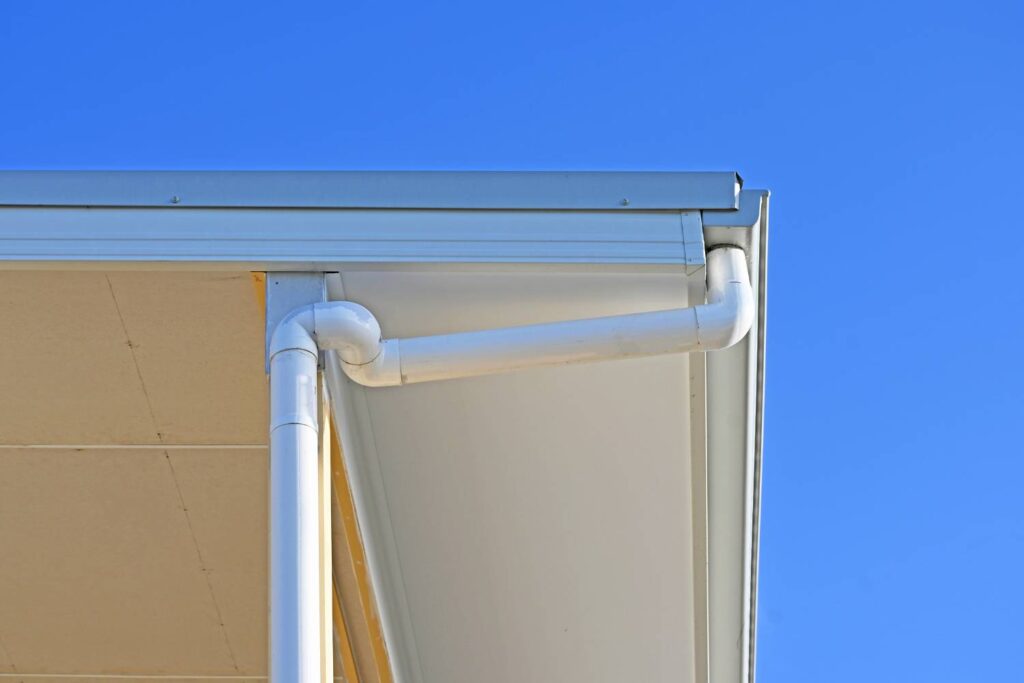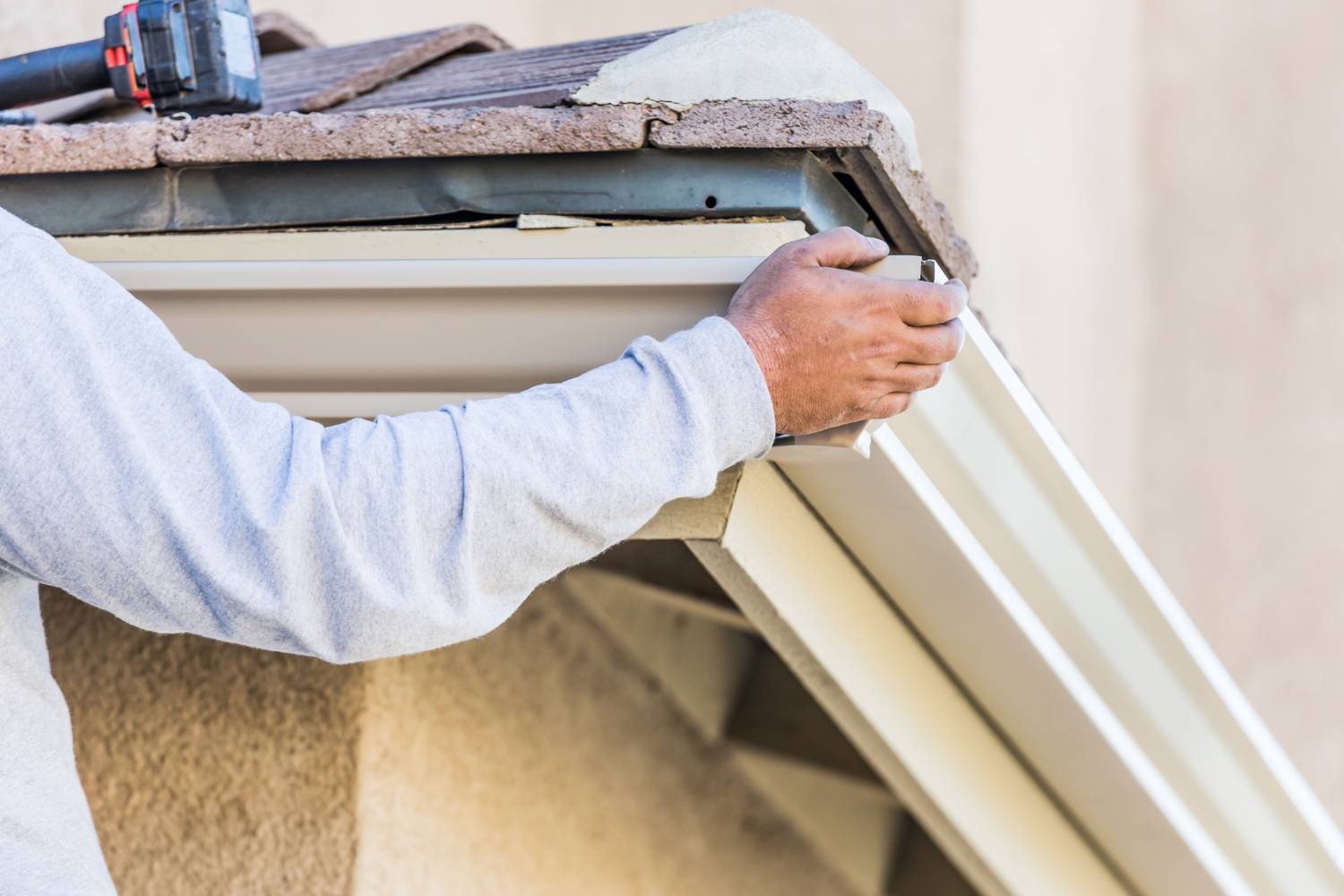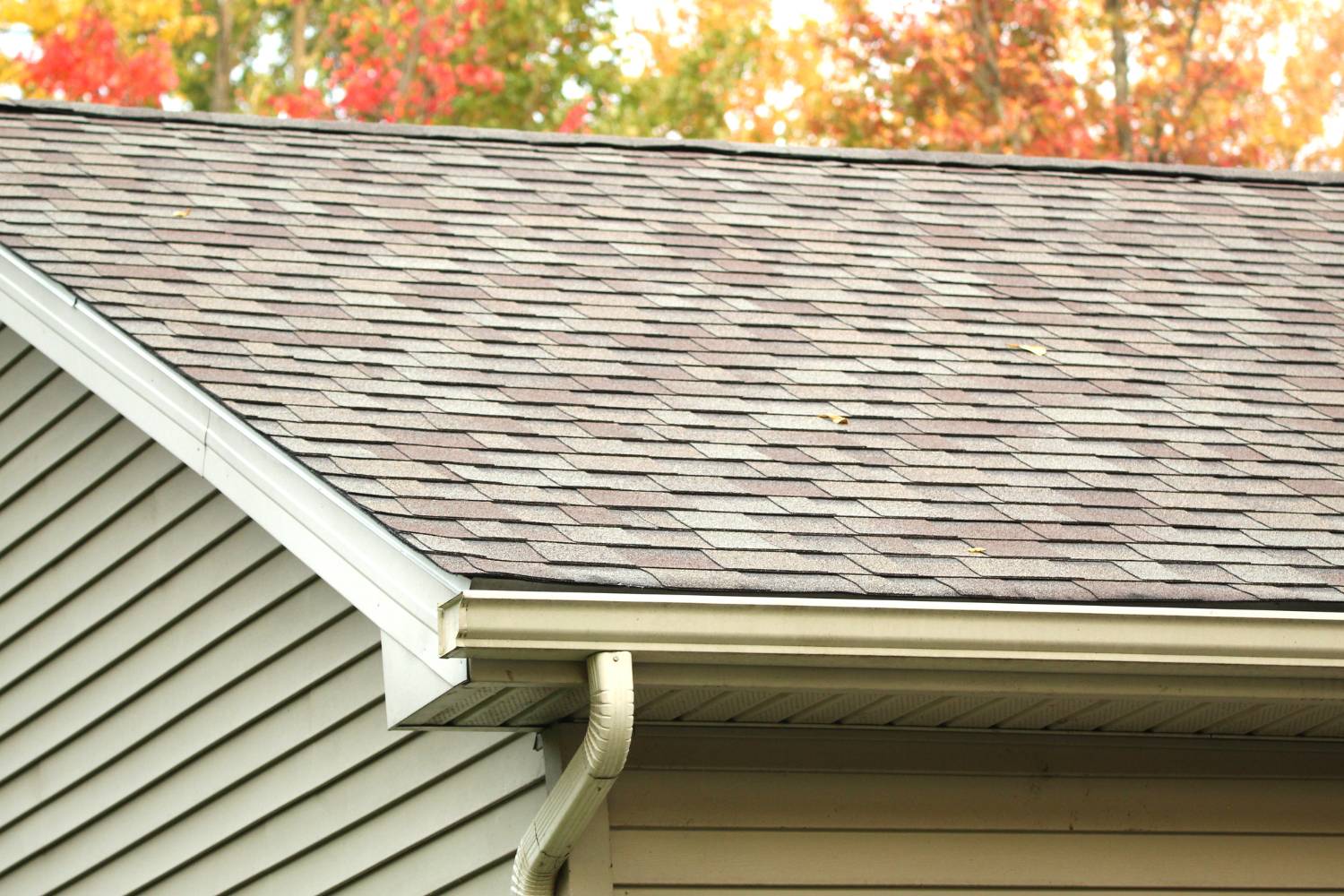Home maintenance involves understanding various components that contribute to the structure and look of your house. Two important parts of any roofing system are fascia and guttering. Although they are often mentioned together, fascia and guttering serve distinct roles in protecting your home from weather damage.
What Is Fascia and Why Is It Important for Your Home?
Fascia boards play a vital role in the structural integrity and aesthetic appeal of a home. Regular maintenance and prompt repairs are essential to prevent damage and ensure the longevity of both the fascia and the overall roof structure. Choosing the right materials and taking preventative measures can save time and money in the long run.
Fascia is a crucial component in the structure of a roof, providing both aesthetic and functional benefits. This blog aims to explore the different aspects of fascia, its importance, materials used, benefits, and maintenance tips.
What Is Fascia?
Fascia is a vital component in the structure of a roof, playing several crucial roles. Located along the lower edge of the roof, the fascia board connects to the rafters and supports the bottom row of tiles. It is situated between the roof and the exterior walls of the building, often serving as a foundation for the gutters.
One of the primary functions of fascia is to provide support. It ensures that gutters are securely attached to the roof, offering a stable base that can withstand various weather conditions. This support is essential for the proper functioning of the gutter system, which helps in directing rainwater away from the house.
In addition to support, the fascia board plays a significant role in protecting the home. It seals off the attic, preventing weather elements and pests from entering. This barrier is crucial in maintaining the integrity of the attic space, safeguarding it from water intrusion and potential infestations by animals or insects.
Aesthetically, the fascia contributes to the overall curb appeal of a home. When covered with trim that matches the gutters, it creates a cohesive and visually appealing exterior. This not only enhances the look of the home but also adds to its value.
Overall, the fascia is an essential element of the roof structure, offering support, protection, and aesthetic benefits to the home.
Types Of Fascia Materials
Wood provides a traditional aesthetic and is easy to work with, making it a popular choice for many homeowners. However, wood fascia requires regular maintenance to prevent moisture damage, which can lead to rot and decay over time.
Aluminium fascia is known for its durability and low maintenance needs. It is resistant to various weather conditions, making it a long-lasting option. The main disadvantage is its higher cost compared to wood, which may not fit everyone's budget.
Composite fascia materials are an eco-friendly choice as they often incorporate recycled materials. They are highly resistant to decomposition and provide a durable option for fascia boards. On the downside, composites can be difficult to repair if damaged and are generally more expensive than traditional wood.
Vinyl fascia is versatile and available in a wide range of colours, making it easy to match any home's exterior. It is also easy to install and repair, making it a convenient choice. However, vinyl can warp and suffer damage in extreme weather conditions, which may affect its longevity.
UPVC/PVC fascia stands out for its resistance to water and temperature fluctuations. It requires minimal maintenance, making it an attractive option for those looking to minimise upkeep. While UPVC/PVC can be more expensive than wood, it is usually less costly than aluminium.
Benefits Of Fascia Gutters
Fascia gutters offer a multitude of advantages that enhance both the functionality and aesthetic appeal of a home. One of the primary benefits is their contribution to curb appeal. These gutters provide a sleek and finished look, significantly enhancing the overall exterior appearance of the house. This not only makes the home more attractive but can also increase its value and appeal to potential buyers.
In addition to their aesthetic advantages, fascia gutters are highly effective in ensuring the security of the gutter system. They are designed to remain securely in place, even during extreme weather conditions. This stability is crucial in preventing the gutters from detaching or becoming damaged, which can lead to costly repairs and maintenance.
Furthermore, fascia gutters play a vital role in protecting the house from moisture-related issues. By effectively channelling rainwater away from the structure, they help prevent potential damage caused by water infiltration. This includes avoiding problems such as wood rot, mould growth, and foundation erosion, which can compromise the structural integrity of the home.
Overall, fascia gutters are an excellent investment for homeowners looking to enhance the beauty, security, and longevity of their property.
Common Issues With Fascia
Fascia, an essential component of a building's exterior, can encounter several problems that may compromise its functionality and aesthetics. One prevalent issue is moisture damage. When fascia is exposed to water over time, it can suffer from wood rot, leading to structural instability. This deterioration not only affects the fascia itself but can also impact the overall integrity of the building.
Animal damage is another common problem. Various pests, such as rodents and birds, may chew on the fascia or create gaps in it. These openings can become entry points for more pests and potentially lead to further damage.
Temperature and moisture fluctuations can cause the fascia to crack and bow. As the material expands and contracts with these changes, it can weaken and deform, compromising its appearance and effectiveness in protecting the building.
Lastly, persistent moisture can foster the growth of mould and algae on the fascia. This fungal growth not only disfigures the fascia but can also lead to additional deterioration over time. Addressing these issues promptly is crucial to maintaining the fascia's condition and the overall health of the building.
Fascia Maintenance And Repair
When to Replace Fascia
There are several indications that your fascia might need replacement. One primary sign is damage caused by moisture, which can lead to the wood rotting or becoming discoloured. Additionally, if the fascia appears cracked, bowed, or infested by pests, it is likely time for a replacement.
Another consideration for replacing fascia is aesthetics. Staining, chipping, or other visible damage can significantly detract from the overall appearance of your home, making replacement a worthwhile investment to maintain curb appeal.
Preventative Measures
To avoid the need for frequent repairs or replacements, several preventative measures can be taken. Regular inspections of your fascia are crucial; these should be thorough, looking for any early signs of damage so that issues can be addressed before they worsen. Proper maintenance of gutters is also essential.
Keeping gutters clean ensures that water flows correctly and does not overflow, which can cause water damage to the fascia. Finally, the use of fascia trim is recommended. This protective layer shields the fascia from the elements, significantly reducing the maintenance required and extending the lifespan of your fascia.
What Is Guttering and How Does It Protect Your Home?
Guttering is a critical element in protecting your home from water damage. Choosing the right type and material for your gutters, combined with regular maintenance, ensures the longevity and efficiency of your guttering system. Investing in quality gutters and upkeep can save significant time and money in the long run.
Guttering is an essential component of any home, directing rainwater away from the structure to prevent damage.
How Guttering Works
Guttering plays a crucial role in managing rainwater effectively. It starts with the installation of gutters along the edge of the roof. These gutters are designed to collect rainwater as it flows down the slope of the roof.
Once the water is collected, it is channelled through the gutter system towards downspouts. The downspouts are vertical pipes that carry the water from the gutters down to the ground. At this point, the water is diverted away from the foundation of the building, often via splash blocks or other drainage solutions.
Importance of Guttering
The importance of guttering cannot be overstated, as it serves several vital functions in protecting your home. Firstly, it prevents water damage by ensuring rainwater does not collect on the roof. Without gutters, water can cause severe damage, leading to rot, mould, and the deterioration of shingles, soffits, and fascia.
Additionally, gutters protect the foundation of the house by directing water away from the base, thereby preventing soil erosion, foundation weakening, and potential basement flooding. Lastly, well-maintained gutters reduce the risk of water-related damage to windows, siding, and interior walls, thus saving homeowners from costly repairs.
Types Of Guttering
Guttering systems come in a variety of types, each with distinct characteristics and uses. Understanding the different types can help you make an informed decision for your property.
Sectional Gutters
Sectional gutters are available in pre-cut pieces that are joined together during installation. This type of guttering is known for its ease of installation and wide availability, making it a popular choice for many homeowners. However, the joints where the sections meet can be prone to leaks over time, which may require regular maintenance to ensure proper functionality.
Seamless Gutters
Seamless gutters are crafted from a single piece of material, with joints only at the corners and downspouts. This design significantly reduces the likelihood of leaks, making them more durable compared to sectional gutters. However, due to their custom nature, seamless gutters require professional installation, which can be more expensive upfront but often results in lower maintenance costs over time.
Gutter Profiles
Different gutter profiles cater to various aesthetic and functional needs:
- K-Style Gutters: These gutters resemble crown moulding and are popular for their decorative appearance. They have a high capacity for holding water, making them a practical choice for many homes.
- Half-Round Gutters: Featuring a traditional, half-circle shape, these gutters are often found on older homes. Their classic look complements the architectural style of historic properties.
- Box Gutters: Commonly used in commercial settings, box gutters offer a large capacity for water flow. Their simple, rectangular design is highly functional for buildings with extensive roof areas.
- Ogee Gutters: Known for their decorative double-curve design, ogee gutters are used in both residential and commercial properties. Their aesthetic appeal and effective water management make them a versatile option.
Each type of guttering system and profile has its advantages and disadvantages, so choosing the right one depends on your specific needs, budget, and the architectural style of your property.
Key Differences Between Fascia and Guttering
Both fascia and guttering are essential components of a home's exterior, each serving unique purposes that contribute to the overall protection and aesthetic of the house. Understanding their roles, materials, and maintenance needs can help ensure your home remains in excellent condition, preventing costly repairs and extending the lifespan of your roofing system.
Understanding the differences between fascia and guttering is crucial for maintaining the integrity and aesthetic appeal of your home. Both components play vital roles in protecting the house from weather damage, but they serve distinct functions. This blog will delve into the definitions, purposes, materials, and maintenance of fascia and guttering.
Functions
Fascia
Fascia boards play a crucial role in the overall structure and appearance of a house. They provide essential structural support for the lower edge of the roof, ensuring stability and a secure point for attaching gutters. This stability is vital in preventing water damage and other issues.
Fascia boards also act as a protective barrier against weather elements, preventing water, snow, and pests from penetrating the roof structure and causing potential damage. Additionally, fascia boards enhance the aesthetic appeal of a house by providing a clean, finished edge to the roof, contributing to the home's overall look and feel.
Guttering
Gutters are essential for effective water management around a house. They collect rainwater from the roof and channel it into downspouts, directing the water away from the house's foundation. This redirection is critical in preventing soil erosion and basement flooding, thus protecting the foundation from potential damage.
Moreover, gutters help safeguard the exterior of the house by preventing water from running down the walls, which can cause unsightly staining and damage over time. Proper guttering is, therefore, key to maintaining both the structural integrity and aesthetic appeal of a home.
Materials
Fascia
Fascia boards can be made from various materials, each with its own set of advantages and disadvantages. Wood is a traditional and aesthetically pleasing option, but it requires regular maintenance to prevent rot and water damage. Vinyl is a durable alternative that is resistant to moisture and pests, though it can warp with temperature changes.
Aluminium is known for being lightweight, durable, and low-maintenance, making it a popular choice for those seeking longevity. Composite fascia, made from recycled materials, offers excellent durability and environmental benefits, albeit at a higher cost.
Guttering
When it comes to guttering, the choice of material can significantly impact both performance and maintenance needs. PVC (plastic) gutters are affordable, lightweight, and easy to install, although they can degrade over time with UV exposure. Aluminium gutters are favoured for their lightweight and corrosion resistance, but they can dent easily.
Galvanised steel gutters provide strength and durability but require proper maintenance to prevent rust. Copper gutters are highly durable and develop an attractive patina over time, though they come with a high price tag. Zinc gutters are durable and low-maintenance, making them ideal for certain climates, but they are also on the more expensive side.
Installation
The installation of fascia is a critical process that involves securing this component along the edge of the roof. This requires precise measurement and secure fastening to ensure it can adequately support the roof structure and the gutter system. The fascia is positioned either horizontally or vertically along the roof edge, serving as the mounting point for the gutters.
When installing gutters, it is attached directly to the fascia board. Proper alignment is crucial to ensure efficient water flow towards the downspouts. The guttering system comprises various parts, including the gutter sections themselves, brackets for securing the gutters, downspouts for directing water away from the roof, and sometimes gutter guards to prevent debris buildup. Each component must be correctly installed to ensure the system functions effectively and efficiently.
Conclusion
Understanding the differences between fascia and guttering is crucial for maintaining your home's structural integrity and visual appeal. Fascia boards provide essential support and protection for your roof, while guttering systems manage water flow to prevent damage to your foundation and walls. Regular maintenance of both components, including inspections, cleanings, and repairs, is key to preventing costly damage and ensuring the longevity of your home.
Choosing the right materials and taking preventative measures can save you time and money in the long run. Whether you're dealing with moisture damage, pest infestations, or simply aiming to enhance your home's curb appeal, keeping your fascia and guttering in good condition is an investment in your home's future. Remember, professional maintenance can offer comprehensive care and peace of mind, ensuring your home remains protected and beautiful for years to come.
Frequently Asked Questions
Fascia provides structural support for the lower edge of the roof and a secure base for attaching gutters. It also acts as a barrier against weather elements, sealing off the attic from moisture and pests while contributing to the home's aesthetic appeal.
Gutters collect rainwater from the roof and channel it through downspouts, directing the water away from the house. This prevents soil erosion and basement flooding, which can weaken the foundation over time.
Common materials for fascia boards include wood, aluminium, composite, vinyl, and UPVC/PVC. Wood has a traditional look but requires regular maintenance. Aluminium is durable and low maintenance but expensive. Composite is eco-friendly but hard to repair. Vinyl is versatile but can warp in extreme weather. UPVC/PVC is water-resistant and low maintenance but can be more costly than wood.
Signs that fascia needs repair or replacement include moisture damage, cracking, bowing, pest infestation, staining, and chipping. Prompt attention to these issues can prevent further damage and maintain the structural integrity of the roof.
Regular maintenance of fascia and guttering is crucial for preventing water damage, pest infestations, and structural issues. It ensures that both components function efficiently, protecting the home from weather-related damage and reducing the risk of costly repairs.


